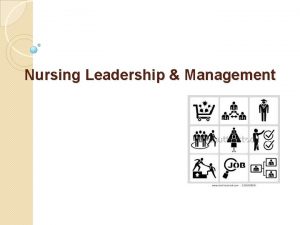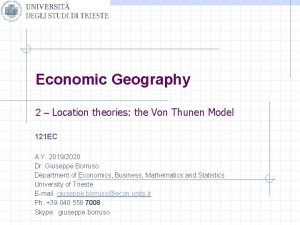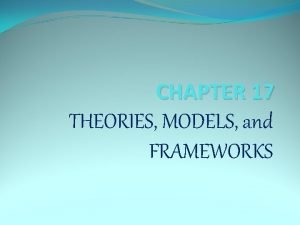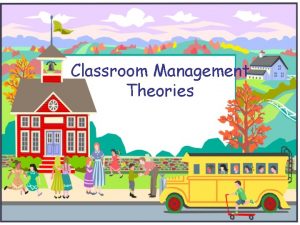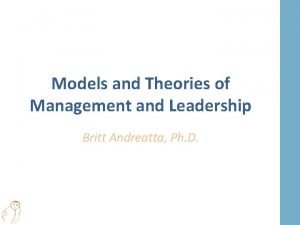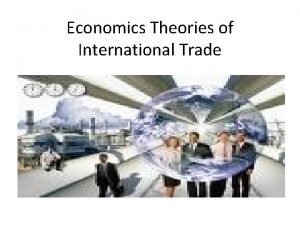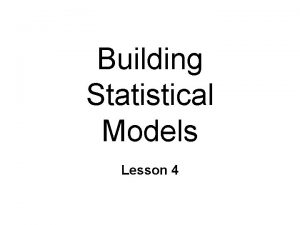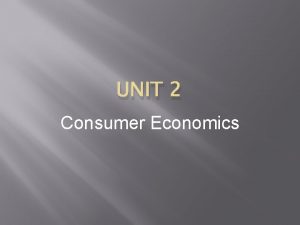Consumer Economics Chapter 3 Consumer Theories and Models











- Slides: 11

Consumer Economics Chapter 3 Consumer Theories and Models Copyright© 2009 Taylor & Francis Group, an informa business

Learning Objectives Explain different theories and models & their relevance Describe the components of the Consumer Power Model Explain factors that affect the model How is consumer well-being defined and measured? Describe the basic functions of business Describe the nature of entrepreneurship

Introduction A theory is an organized system of ideas or beliefs that can be measured. The exchange process occurs when people negotiate with a goal of reaching an agreement. Utility refers to the usefulness of a product, service, or idea.

Consumer Theories Theory of Reasoned Action – behavioral intentions are based on a combination of attitude toward a specific behavior, the social or normative beliefs about the behavior, and the motivation to comply with those beliefs. Prospect Theory – an economic theory that explains choice under uncertainty.

Consumer Theories Mental accounting says that people frame or put into context their buying and selling. Innovation theory describes the spread of new products and ideas through social systems by focusing on the roles played by different types of consumers: Innovators, Later adopters, etc.

Framework for Model Development Exchanges - relationships between two or more parties, such as consumers and markets. Public Policy – government plans or decisions Consumer Organizations – non-government and not for profit groups

Framework for Model Development Trade and Professional Associations – represent companies and industries. Environment – Every component in which the parties make their exchange. Regional subcultures – every country has groups within it that differ in systematic and important ways

Framework for Model Development Technology – part of the environment that represents the application of scientific theories to practical problems. Media – all forms of mass communication PLUS the Internet

Consumer Power Model • Focuses on transactions between consumers and markets within all the other conditions. • Consumption refers to using up goods and services. • Consumers must make many decisions • Consumer well-being includes their financial, health, social, and psychological situations. Copyright© 2009 Taylor & Francis Group, an informa business

Businesses and Markets • Businesses are private or public owned organizations that strive to make profits. • Businesses must perform many functions, such as production, distribution, finance, marketing, R&D, human resource management, accounting, and purchasing. Copyright© 2009 Taylor & Francis Group, an informa business

Chapter Summary Theories and models are important to understanding consumers, businesses, and the economy The interaction of all the players can best be understood as a dynamic system with many interaction parts. Consumer economics demands an understanding of both how businesses operate and how consumers make their decisions in an uncertain environment.
 Food chain diagrams
Food chain diagrams Nursing leadership theories
Nursing leadership theories Von thunens theory
Von thunens theory Nursing informatics theories, models and frameworks
Nursing informatics theories, models and frameworks Hotelling model ap human geography
Hotelling model ap human geography Glasser modeli
Glasser modeli Management models and theories
Management models and theories What is the difference between models and semi models
What is the difference between models and semi models School of business and economics maastricht
School of business and economics maastricht Consumer behaviour in marketing
Consumer behaviour in marketing Black box model consumer behaviour
Black box model consumer behaviour Types of buyer behavior
Types of buyer behavior

